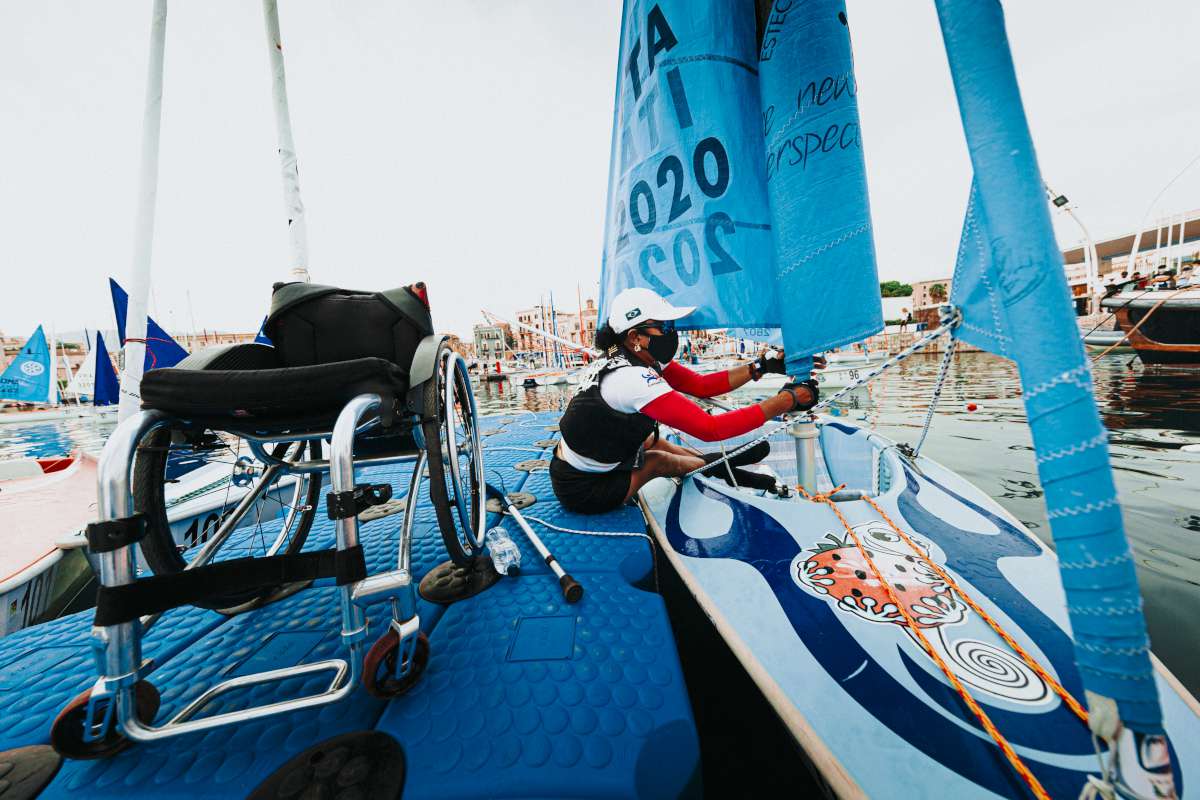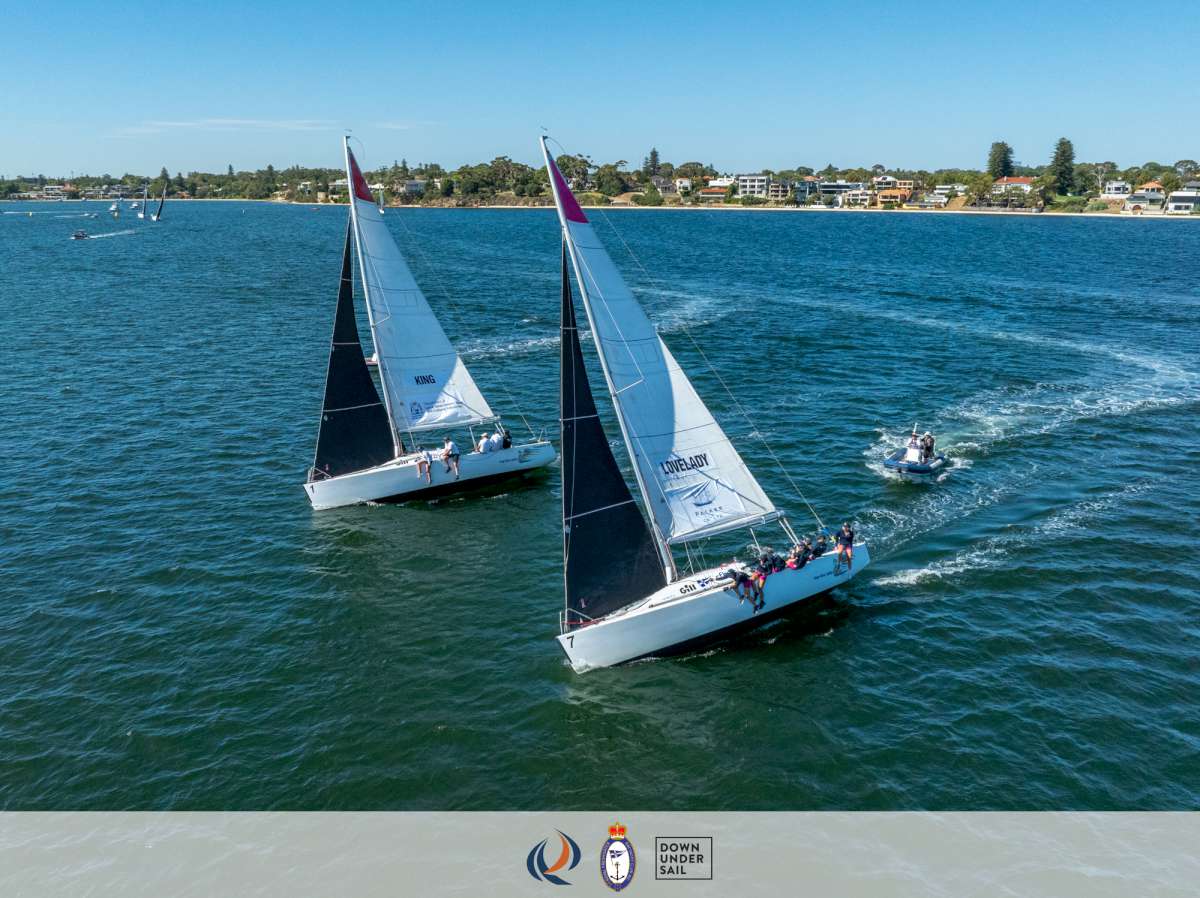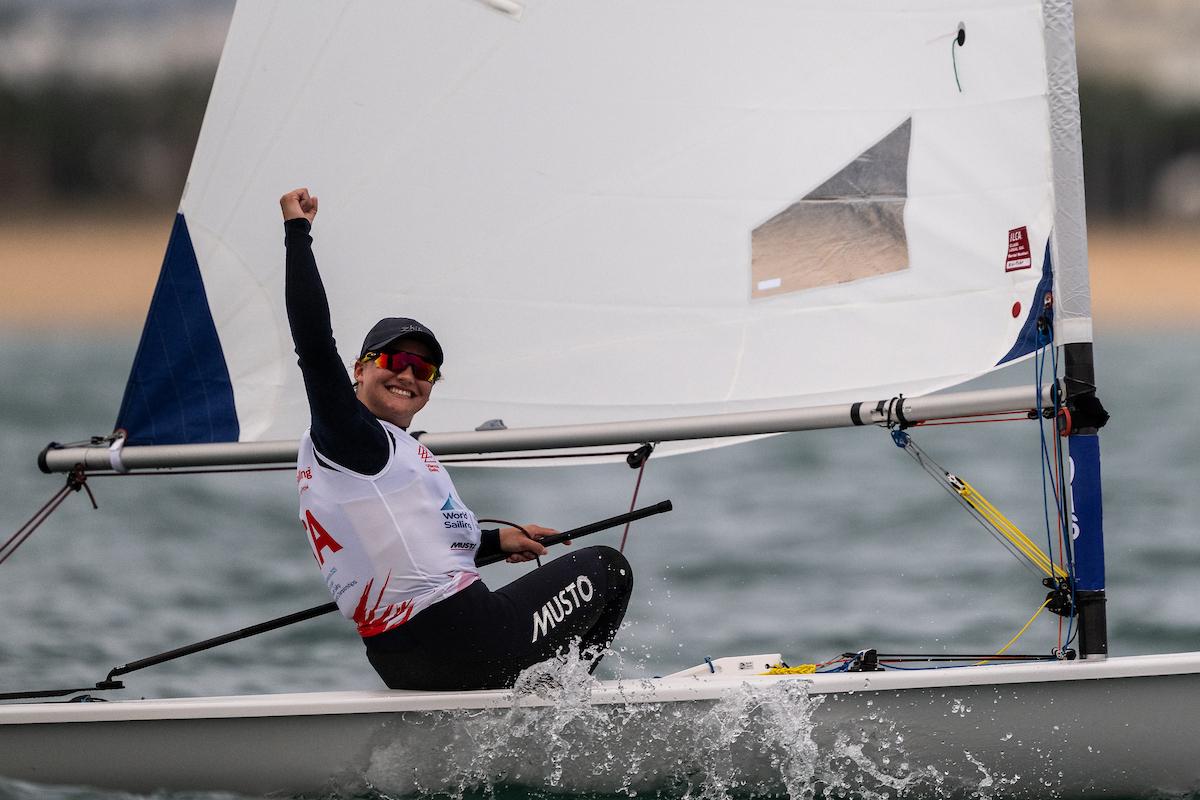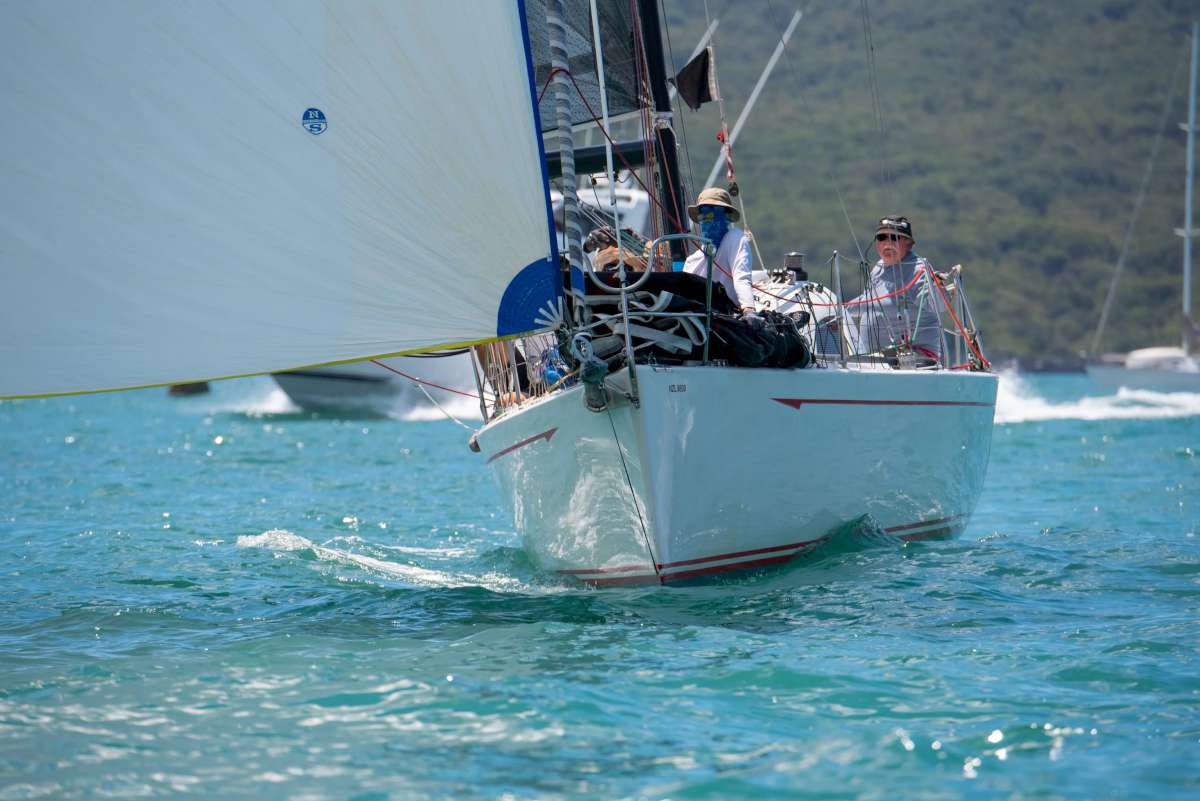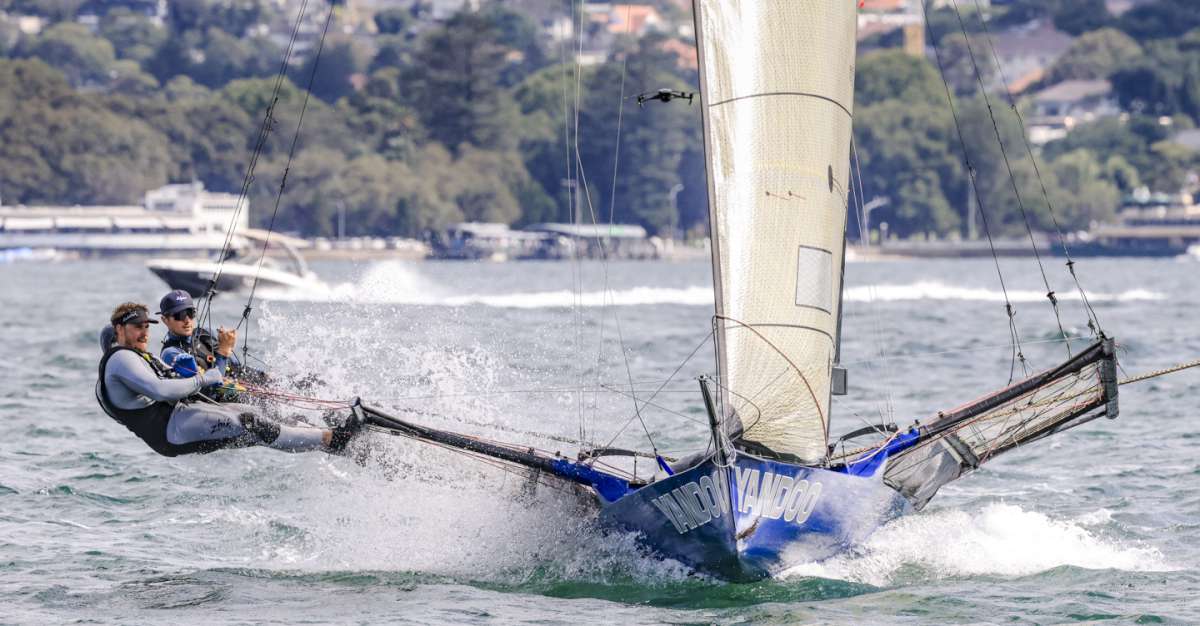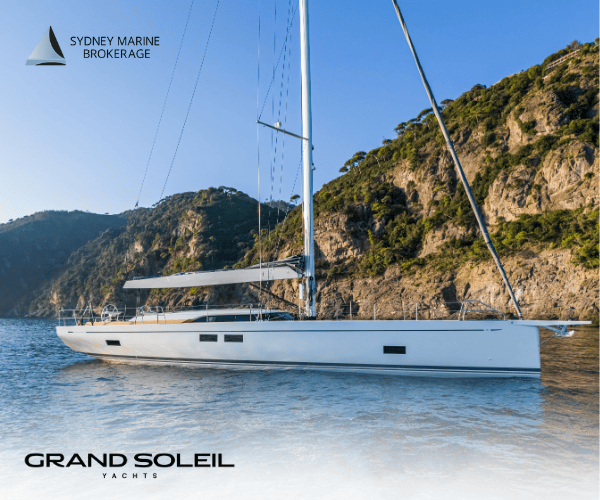The year is 1962, with fine sunny weather favouring the yacht marina at Rushcutters Bay in Sydney. My crewmate Ricky and I were working on our new home, the thirty-two feet yacht Isis, tied up in her usual berth.
I say ‘new home’, because we both jumped ship from the around-the-world yacht Diana, some weeks previously and accepted crew positions on Isis.
Diana v Isis
Crewing on the yacht Diana turned out to be somewhat of an ordeal under the captaincy of Old Etonian, Norman Young. Faulty gear and atrocious weather combined to give Diana the dubious honour of the longest ever Tasman crossing: thirty-one days, including a brief stopover at Lord Howe Island for emergency repairs.
But that is another story.
Our new skipper was the grandly-named Walter Layfeyette Martindale, the 33 years old son of indulgent parents from California. Their twenty-first birthday present to Walter was a light aircraft.
At six foot two Walter had quite an imposing presence and, to itinerant yachties like Ricky and me, he seemed a fairly sound proposition for ocean cruising. Walter’s motive for hiring us was to crew Isis to Tahiti and, to this end, we were provisioning the yacht at night, gradually, over a period of weeks. The reason for night-time operations will become clear fairly soon.
Walter’s objective in heading up to Tahiti was explained as follows: he and his wife Jane, also American, had been married in Tahiti under French Law. Because they were now separated and awaiting divorce, he reasoned that by returning to French Polynesia and filing for divorce there, the French Court would consider his case favourably.
He also thought they would grant him custody of their 22 months old daughter, Liane. It is worth noting here that the Australian Court had already granted Jane Martindale custody of Liane.
Making a run for Tahiti
Walter finally decided on our departure day. He picked a Saturday because that was the day when his wife, Jane, was at her usual hairdressing appointment.
Saturday arrived and, at noon, Walter appeared at the head of the marina with baby Liane under one arm, her high chair in the other, plus a large bundle of nappies. I was half expecting something like this, but when it actually happens the gravity of the situation really hits home.
Ricky and I looked at each other with similar thoughts: child abduction? Are we accomplices? Probably.
The reason for all the hush-hush provisioning at night was now obvious: Walter did not want anyone on the marina to get wind of his plans for Tahiti. Anyway, too late now to back out, so all aboard!
It was a beautiful sunny day with a light breeze. With mainsail hoisted and jib set, we proceeded through the Sydney Heads. We even waved to the coastguard vessel as we sailed past.
Little did we know of the troubles ahead of us and the mayhem we would leave in our wake.
Good weather: bad weather
The first night at sea was uneventful, with everyone getting accustomed to the steering and handling the boat in ocean conditions.
Walter was looking forward to the next morning when he could put his navigation skills into practice.
At this point, Ricky casually queried Walter as to his expertise in navigation, only to learn that he had never actually practised at sea! He had learnt it all at night school.
Anyway, the sun-sight was taken with me noting the exact time on the chronometer. Walter looked pleased with his efforts and went below to work out our position on the chart.
As day two progressed, the sky began to gradually cloud over and Walter was lucky to get the noon sun-shot. At the same time the wind began to strengthen and shift around to the north-east.
The barometer indicated falling pressure. Sure enough, the weather continued to deteriorate, so the decision was made to reef the mainsail and set a smaller jib while we still had some daylight.
Crew of Isis
Walter and I shared the first watch that night and I got to know a bit more about him.
He was making a good living in Sydney as a professional photographer, mainly in the nightclubs. He told me he knew quite a few celebrities, including the singer Shirley Bassey and movie star Robert Mitchum.
In the course of his job he would photograph his club customers, then jump on his motorbike and ride to his studio darkroom to develop the photos. He would then ride back to deliver them. Same day service! Remember, these were the days before digital cameras and smart phones.
Sharing a watch with Ricky was a different story. He had signed on as a youth in the British merchant navy and sailed over much of the globe before settling in Auckland, New Zealand.
He did all manner of manual work: labouring on building sites, steel erecting and window cleaning. The window cleaning job ended when he fell backwards off a ladder and badly damaged his lower vertebrae.
Spinal surgery partially fixed his problem, but back pain could occur in certain work situations. His condition was to prove risky to the operation of the boat in the not too distant future.
Really bad weather and a really bad sextant
The wind was really starting to strengthen and we copped a fair amount of spray back in the cockpit. We put another reef in the mainsail and changed down to a small storm jib.
Conditions got uncomfortable and Isis began bouncing around and digging her bowsprit under. We were forced to lay off about 20 degrees from our heading to make our passage a little less arduous and reduce wear and tear on the gear.
This meant getting forced too far south and not making much easterly headway.
Our problem was compounded by the fact that Isis had a shallow draft, which meant that when sailing hard into wind, she made too much leeway. In other words; we were moving sideways with not much forward progress.
We endured another couple of days of this rough Tasman weather and then finally, a small break in the cloud cover and an easing of the wind. We only had dead reckoning for navigation up to that point, so Walter decided to try for a morning sun-shot.
It was difficult because the boat was jumping around so much, but somehow he managed it. Walter went below to work out our position on the chart, while Ricky and I tidied up the cockpit. But then something happened below, which was to change our fortunes.
Instead of stowing the sextant in its special box, Walter placed it on the top bunk and turned his attention to the chart. Just then, Isis got thumped by a huge wave causing the sextant to leap off the bunk and crash onto the cabin floor. From that point on, it was useless for navigation.
The chart position was not reliable, but we knew we were more south than was desirable; probably close to the roaring forties. Not a good place to be in winter.
The foul weather did not let up for the following two or three days, but we tried tacking to gain some northerly headway. We even had one pitch black night in a massive thunderstorm, complete with hailstones!
It is worth mentioning here that Walter’s little daughter, Liane, was completely oblivious to all this; not a peep out of her!
When the next day dawned, Ricky made a distressing discovery. Our bowsprit was badly cracked, most probably as the result of extreme pressure on the storm jib from the violent squalls.
Change of plans
We all agreed that Tahiti was now out of the question, at least until we repaired the bowsprit. We obviously could not go back to Sydney, so Norfolk Island seemed the next choice.
We still had the major problem of the broken sextant, but Walter reckoned he had an ace up his sleeve, in the shape of a radio device called an automatic radio direction finder (ADF).
This was a piece of equipment installed on aircraft in those days as a primary aid to navigation. The device worked by tuning the radio on to a Morse signal transmitted by a ground location and simply following the signal to the source.
Walter had installed his secondhand device on Isis in the fo'c's'le. We switched it on, rotated the loop aerial till we picked up Norfolk Island’s powerful Morse signal and then just steered by the cockpit compass reading that corresponded to the radio needle indication.
Arrival Norfolk Island
One problem solved, but the weather was still against us and, without a suitable headsail, our progress was slow.
It was about another three days before we sighted Norfolk Island and, in the late afternoon, we dropped anchor in Cascades Bay. The fact that we made landfall at Cascades, meant that we had sailed around in a semi-circle for the past eighteen days! It was June 5th, 1962.
Walter decided that I should be the one to row to shore to find out if we could get our bowsprit repaired. He insisted that I give a false name for the yacht and, to this day, I cannot recall the one that I used.
By now, a handful of locals had gathered and helped me up the steps. They lifted the dinghy out of the water. I was to find out that the islanders do not anchor or moor their boats because of the treacherous weather changes. They use small jib cranes to launch and retrieve.
Nicked and put in to custody
At the head of the jetty stood a one-man reception committee. A tall military-looking gentleman in a trench coat and trilby hat. We shook hands as he introduced himself as Detective Sergeant Farnsworth.
As it turned out, he was the only policeman on the island. He asked for my passport, looked at it and put it in his pocket. He wanted to know the name of the yacht, how many on board, what port were we out of etc.
He then cautioned me not to attempt any contact with the crew. He went on to say that I would be placed in custody at the whaling manager’s house for the night.
After a short drive in his Land Rover, we arrived at the manager’s house only to find a rip-roaring party in progress! Loads of people, booze and loud music.
I was introduced to the manager, a Mr. Paton, as well as just about everyone else; was given a cold beer and shown the front page of a Sydney tabloid newspaper. There it was, complete with photos, the coverage of our child-abduction escapade and reports of the search aircraft and boats in their efforts to find the Isis.
As it happened, of course, they were all looking in the wrong area because we had been driven so far south.
With our story blown, I was fielding questions from all and sundry and must admit to enjoying a sort of celebrity status. The remainder of the party is a bit of a blank, but I vaguely remember falling into a normal bed that was not pitching and rolling about.
Walter, Ricky and Liane nicked
Early next morning, June 6, Sergeant Farnsworth with me and a couple of local boat men drove down to Cascades Jetty. I watched as they craned a small launch into the water and sped out to Isis which was about 200 metres offshore.
Sergeant Farnsworth boarded Isis and, after a while, Ricky, Walter and Liane emerged, boarded the launch and were returned quickly to the jetty.
Norfolk Island in those days boasted only one hotel: The Paradise Hotel. Walter and Liane stayed there that night, while Ricky and I remained at the manager’s house.
We had to wait four days until they arrived from Sydney. On the Saturday, the Qantas DC4 flight landed and there disembarked Jane Martindale, her lawyer, a reporter from The Sun Herald and two detectives.
Events now moved quickly as they all had to fly back to Sydney the next day for a court appearance. Ricky and I thought we might be charged as accomplices, but we were never approached or indeed questioned by the Sydney detectives.
Shortly before Walter’s flight back, he requested that Ricky and I look after Isis with the promise to return as soon as the legal proceedings were completed. Little did we know then that would be the last time we would ever see him.
Goodbye Walter, hello storm
With Walter and the whole entourage gone, we resigned ourselves to living aboard Isis and making the best of a bad situation until his return.
We were not happy with our anchorage in Cascades Bay as the weather systems in the region are notorious for swift changes. Sure enough, the very same day that Walter and co. flew out to Sydney, a nasty storm blew up around midday, threatening to force Isis on to the rocks.
We had to move quickly, so we fired up the motor and attempted to raise the anchor. No success as it was firmly snagged.
In desperation we decided to buoy the anchor and make a run for it. We tied a plastic container on to the anchor chain, unshackled it from the bollard and hastily threw it overboard.
With no time to waste we motored out of a dodgy situation and pointed Isis north, in the direction of New Caledonia. We ran before the storm on this course through the night and most of the next day, by which time the wind had abated somewhat.
Finally we could relax, tidied up the boat, cooked a meal and turned our thoughts to the problem of getting back to Norfolk Island. We turned south and proceeded at a snail’s pace as now there was so little wind.
Soon there was no wind at all and we were becalmed. Total frustration!
We were reasonably confident of finding Norfolk Island again as we now knew how to operate the radio direction finder.
We switched the set on, rotated the loop aerial, but it was dead as the proverbial dodo!
By tracing the wiring from the battery to the radio, we discovered the copper had been corroded by the seawater coming through the forward hatch and running down the bulkhead. This had the effect of shorting out the radio receiver.
We cut out the corroded bits, rejoined the cleaned bits and hey presto! We were on the air again.
Soon we were listening to Norfolk Island’s powerful signal transmitting its call sign. Now all we needed was a decent breeze to get us back to the island.
Return to Norfolk Island
Luck was with us on the return trip, with a steady breeze, full mainsail and the staysail poled out as a makeshift genoa. After two days of easy sailing we sighted Norfolk once more.
We headed straight to Cascades Bay, retrieved our anchor and turned our thoughts to the ever-present problem of an exposed anchorage. No way did we relish a repetition of the previous week’s experience. The locals told us they had given us up for lost!
Once ashore again, we asked around amongst the locals about the chance of finding a safe anchorage for Isis. We were introduced to Frank Christian, one of the many descendants of the famous Fletcher Christian who led the mutiny on HMS Bounty back in 1789.
Over a few drinks on board Isis, he agreed to pilot the yacht into a sheltered lagoon called Emily Bay at Kingston on the south side of the island. It had a protective reef through which an opening had been blasted during the Second World War to allow passage for the Royal Australian Air Force air/sea rescue launch in rescuing downed aircrew.
If we could get Isis safely through the reef opening, we would be the first boat of any size in Emily Bay since World War Two. Frank would be on the helm so it was just a matter of waiting for reasonable sea and weather conditions.
Meanwhile, Walter had been contacted in Sydney by Sergeant Farnsworth who assured him his beloved Isis was indeed not lost at sea and an attempt to move it into Emily Bay was planned.
As luck would have it, the very next day on June 19, the tide and wind conditions were deemed suitable for the attempt. With Frank skippering and Ricky and I up forward, we approached the opening in the reef.
Now, we had all been drinking a fair bit the previous night, so I had a fleeting thought as to Frank’s ability to manage the task ahead.
But then I thought about how seamanship must be an integral part of the islander’s DNA and stopped worrying.
Of course he handled the boat very skilfully as he aligned Isis with various markers on shore in order to negotiate the dog-leg passage. It was times like this that a boat with such shallow draft really pays off. I wondered how the RAAF rescue launch coped back in the days of the Pacific War.
One final surge and were inside the reef, and what a feeling that was! Safely anchored on a sandy bottom, we cracked open the grog locker and breathed a collective sigh of relief.
Safely anchored and relaxed
The following days were something of a blur and I vaguely remember lots of boozy parties at all hours aboard Isis, with many of the local girls coming and going.
With the boat provisioned for a voyage to Tahiti, there was no shortage of food or drink, though one black mark was a pilfering incident while we were ashore. Fresh footprints in the sand and the dinghy not in its normal place were a dead giveaway.
I celebrated my 25th birthday on board Isis. Yet another blur!
At some point, possibly late July or early August, Ricky and I were approached by a young ex-pat New Zealander called Ian Kenny. He extended a rather generous offer to us.
He proposed that we would move off the yacht into his house and bring all the provisions with us.
This made sense because we did not want any repetition of the pilfering episode or any more intrusions on the yacht. We duly moved in and met his wife, Joan.
Ricky’s love-life and departure
By now, Ricky was straining at the leash to get back to Sydney, to renew his relationship with a rather attractive German girl from Rushcutters Marina. Ricky and Helga had been conducting a rather risky affair; risky, because Helga was married and living on a houseboat on the marina with her husband and his brother.
Ricky’s big opportunity to get off the island arrived in the form of a Royal New Zealand Air Force plane that landed at Norfolk as part of a navigation training exercise. Ricky convinced him that, because of his spinal injury and ongoing back pain, he should be evacuated back to Auckland on the return flight. Unbelievably, the officer agreed and Ricky got his lift back to New Zealand.
That was the last time I saw Ricky. I heard many years later that the officer got severely reprimanded for carrying Ricky as a civilian passenger on board an air force plane, especially as he was allegedly seen to nimbly trot down the aircraft steps onto the tarmac.
A rude awakening
Then one day, working on the roads as usual, the foreman dropped a bombshell on me. He told me that his niece’s husband would soon be returning from Sydney. His niece just happened to be the young lady I was keeping company with and she forgot to mention she had a husband!
I wasted no time getting to Mr. Prentice’s shop and booked my ticket to Auckland. With just two days before my flight, I said goodbye to Major Wordsworth, Ian and Joan Kenny and checked with Mr. Prentice, hoping for some last minute news from Walter. As usual, no news, so I left it to Mr Prentice to notify Walter of my departure.
Farewell drinks at the Paradise Hotel and, next afternoon, I was safely on board the Qantas DC4 and airborne. I breathed a great big sigh of relief as Norfolk Island gradually receded from view beneath the wingtip.
We landed at Whenuapai, which was and still is, a New Zealand Air Force airfield. Auckland did not have its international airport.
Bad Isis news
It was at that point, in late October 1962, that I received a letter and newspaper clipping from my old friend Ian Ken on Norfolk Island. The clipping, dated 12 October 1962, showed poor old Isis wedged firmly into the base of the cliffs at Kingston, being heavily pounded by huge breakers. A very sad sight indeed.
Ian’s account of what led up to the shipwreck, all seemed to point to Walter’s lack of judgement. Walter had returned to the island with a new crew on 29th September, about six weeks after I had departed.
I am uncertain as to whether the plan was to continue the voyage to Tahiti or simply return to Sydney. In any event, he decided to move Isis from her safe haven in Emily Bay to Kingston.
It seems that all the crew and Walter went ashore to the Paradise Hotel, leaving no one on anchor watch. Sure enough, in the small hours of 12th October, the weather turned bad very quickly.
Isis either dragged her anchor or, more likely, snapped her chain; but she was driven relentlessly on to the Kingston Rocks. There was nothing to be done except to watch helplessly as breaker after breaker pounded Isis to matchwood. A sad ending for the Tasmanian-built yacht.
Farwell Ricky. RIP
On an even sadder note: many years later, probably around 1967, I bumped into an old yachting acquaintance in a doctor’s waiting room. We had crossed paths back in Sydney and he was very familiar with the sailing fraternity there.
We got to discussing people we knew from the Rushcutters Bay scene and I was shocked to hear that Ricky had suicided.
The story goes that he had made his way back to Sydney from Auckland to seek out Helga who was still living with her husband on the boat at Rushcutters Bay. She and Ricky apparently set up house in a bedsitter in Kings Cross but Helga’s husband got wind of it and he was out for revenge.
When word reached Ricky he must have panicked and, in a fit of depression, stuck his head in the gas oven. Who knows for sure; I got that part of the story third-hand but I am inclined to believe it. Sadly, yet another story with a very unhappy ending.
If Walter and Jane Martindale are still around they would be about eighty-nine years old and their daughter Liane about fifty-seven. I wonder if she knows anything about her brief but stormy adventure, all those years ago?
Fake news
In the course of my search for information on the wrecking of Isis, I came upon a six page report written by a freelance correspondent for the Sydney Daily Telegraph.
This reporter, Ken Mullen, writes with all the enthusiasm of a cub reporter about both the abduction of Liane and the wreck itself. Unfortunately, his story is mainly false, even to the extent of placing Walter Martindale as myself when I was apprehended by Sergeant Farnsworth on first arrival at Cascades.
Epilogue
Towards the end of 1964 I read in the Auckland Star, the news of the sinking of the old yacht Diana. She went down in a sudden squall off the east coast of Madagascar, in the Indian Ocean. Captain Young and a local native man were the only two people on board at the time.
I reflected on Captain Young’s words back in 1962, when he said he would rather go down with his ship than eke out his days in a bedsitter in London. He certainly got his wish. ≈





